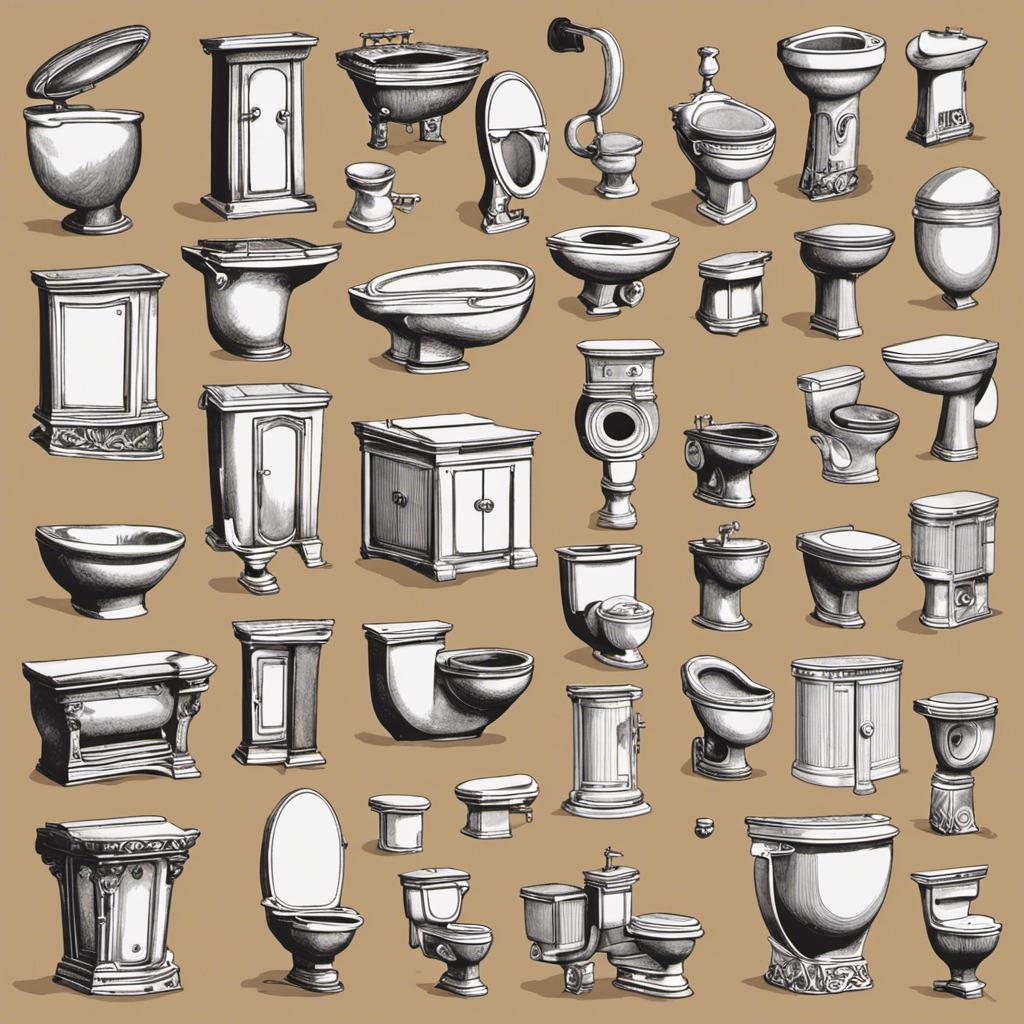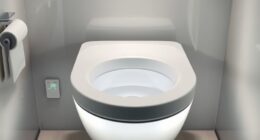Is it possible to flush the toilet on an airplane? This is a query that has crossed the minds of numerous travelers during their journeys.
In this article, we’ll dive into the functionality of airplane toilets and explore the technology behind them. We’ll also discuss how they differ from regular toilets and the importance of waste management on aircraft.
So, fasten your seatbelts as we take a closer look at the process of flushing a toilet on a plane, the environmental impact, and the future of airplane toilet technology.
Key Takeaways
- Airplane toilets utilize a powerful vacuum system for waste disposal, creating a strong suction force.
- Airplane toilets are more compact in size and use a limited amount of water, making them more space-efficient and environmentally friendly compared to regular toilets.
- Proper waste management on aircraft is crucial for maintaining a clean and hygienic environment, preventing odors and the growth of bacteria, and ensuring passenger comfort and safety.
- The environmental impact and sustainability of airplane toilets can be improved through water conservation technologies, water recycling, efficient design, and advancements in technology to minimize water usage and reduce waste.
The Functionality of Airplane Toilets
Airplane toilets function by using a powerful vacuum system to flush waste away. When a user presses the flush button, a valve opens, creating a strong suction force that swiftly removes waste from the toilet bowl. The vacuum system then transports the waste through a series of pipes and into an onboard sewage tank located in the lower section of the aircraft. This efficient waste disposal method minimizes odors and prevents the accumulation of waste during flights.
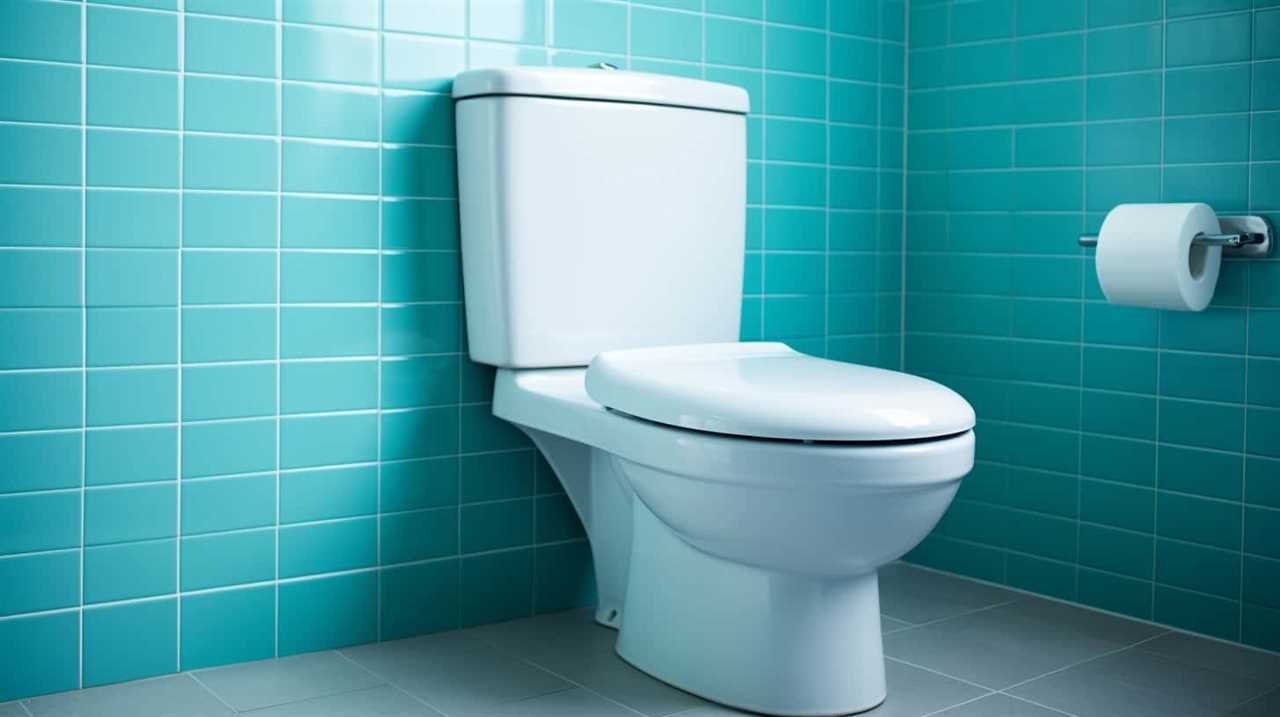
Understanding the mechanics and waste disposal methods of these toilets is crucial for a mastery-level understanding of this technology. Now that we’ve explored the functionality of airplane toilets, let’s delve deeper into understanding the technology behind them.
Understanding the Technology Behind Airplane Toilets
We can gain a deeper understanding of the technology behind airplane toilets by examining how they utilize a powerful vacuum system for waste disposal.
Here are three key aspects of airplane toilet technology:
- Vacuum system: Airplane toilets are equipped with a vacuum system that creates a strong suction force to remove waste quickly and efficiently. When the flush button is pressed, the vacuum is activated, pulling waste into a sealed container.
- Waste storage: The waste is stored in a closed container located in the lower section of the aircraft. This container is designed to be leak-proof and odor-free to ensure a hygienic environment for passengers.
- Maintenance and design innovations: Airplane toilet maintenance involves regular cleaning, waste disposal, and inspections to ensure proper functioning. In recent years, there have been design innovations to make airplane toilets more space-efficient, environmentally friendly, and easier to clean.
Understanding the technology behind airplane toilets helps us appreciate the engineering and systems that make air travel more comfortable and convenient for passengers.
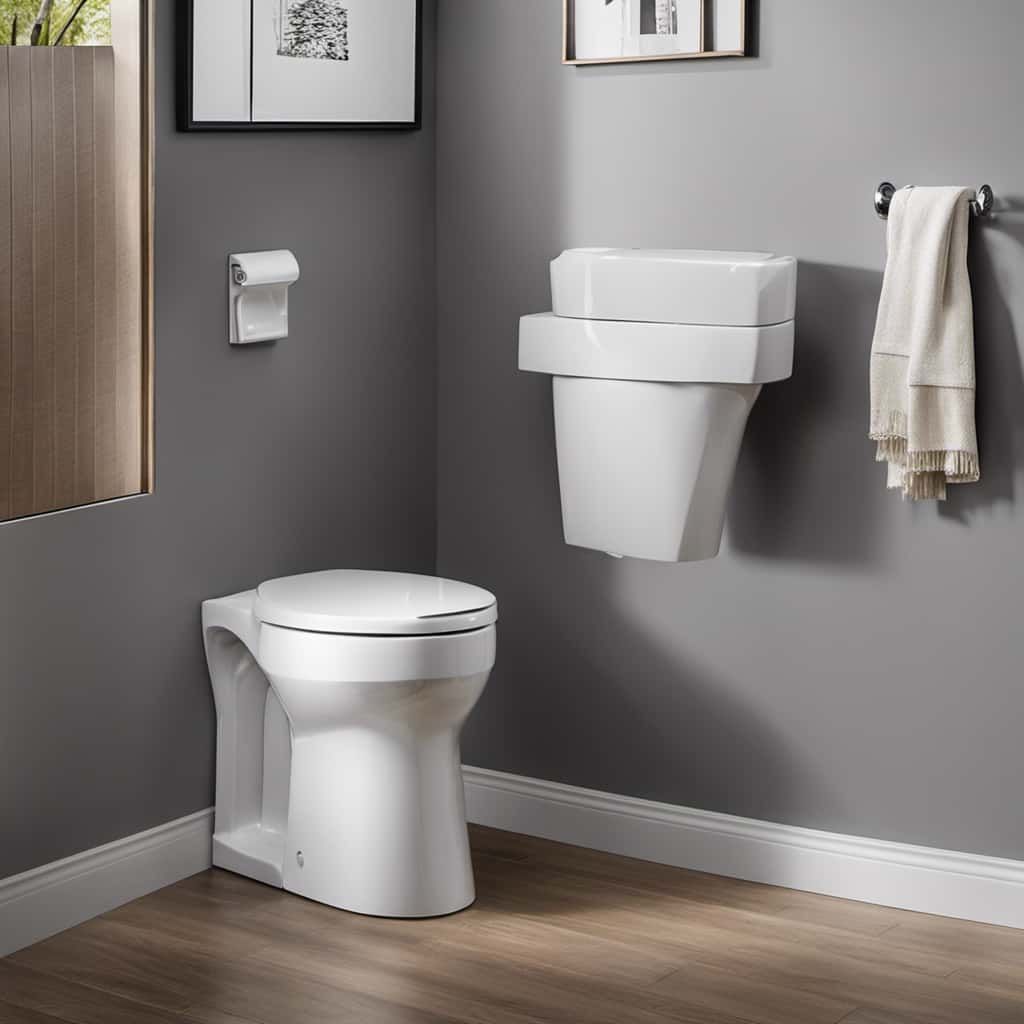
How Airplane Toilets Differ From Regular Toilets
Moving on to how airplane toilets differ from regular toilets, let’s explore some key distinctions in their design and functionality. Airplane toilet design takes into consideration the unique challenges of operating in a confined space with limited resources. Here’s a table that outlines some of the main differences:
| Airplane Toilets | Regular Toilets | |
|---|---|---|
| 1 | Vacuum System | Gravity-Flush System |
| 2 | Compact Size | Standard Size |
| 3 | Limited Water Use | Generous Water Use |
Airplane toilets utilize a vacuum system, which efficiently removes waste using suction. This allows for a smaller, more compact design compared to regular toilets. Additionally, airplane toilets are designed to use limited amounts of water, making them more environmentally friendly. Regular toilets, on the other hand, typically rely on a gravity-flush system and have larger dimensions. The maintenance procedures for airplane toilets also differ, with specialized technicians trained to handle repairs and servicing. Overall, these design and maintenance differences allow for efficient and reliable operation of toilets onboard aircraft.
The Importance of Waste Management on Aircrafts
Continuing from our exploration of how airplane toilets differ from regular toilets, let’s now delve into the importance of waste management on aircrafts.
Proper waste management is crucial for maintaining a clean and hygienic environment onboard. Here are three reasons why aircraft waste management is of utmost importance:
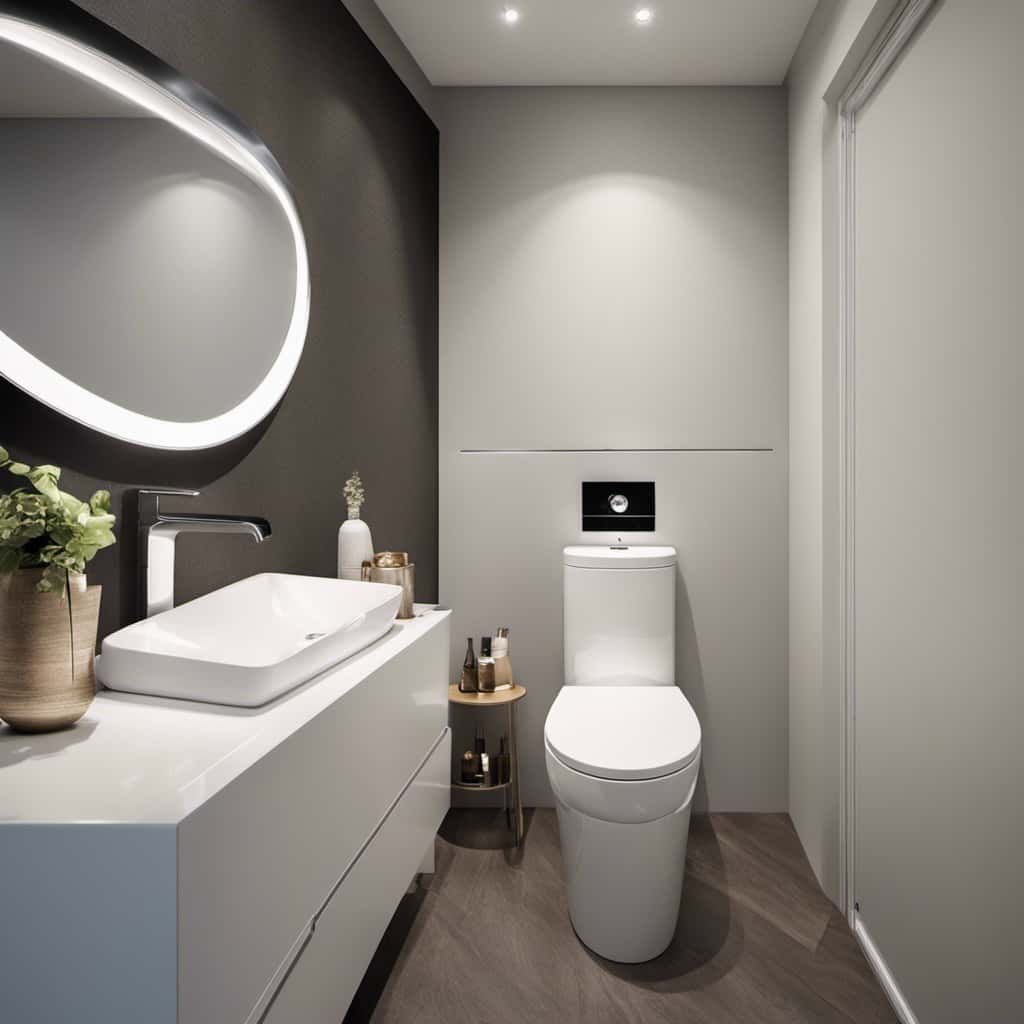
- Preventing odors and bacteria: Effective waste disposal methods, such as vacuum systems or chemical toilets, help minimize unpleasant odors and prevent the growth of bacteria in the confined space of an aircraft.
- Ensuring passenger comfort and safety: Regular maintenance of airplane toilets ensures that they’re always in good working condition, providing passengers with a comfortable and convenient experience. This includes checking for leaks, fixing any issues promptly, and ensuring proper disposal of waste.
- Environmental impact: Proper waste management on aircrafts helps minimize the environmental impact of air travel. Airlines have implemented various strategies, such as recycling waste where possible and using environmentally friendly chemicals in toilets, to reduce their carbon footprint.
The Process of Flushing a Toilet on a Plane
When it comes to flushing a toilet on a plane, there are a few key points to consider.
Firstly, water usage is limited due to the constraints of being in the air, so the flushing mechanism is designed to use a minimal amount of water.
Secondly, waste disposal methods on planes involve a vacuum system that suctions the waste away, preventing any lingering odors or mess.
These efficient systems ensure that toilets on planes can be used without any issues, even at high altitudes.

Water Usage on Planes
We use a small amount of water to flush the toilets on planes. Despite the limited availability of water onboard, airlines prioritize water conservation by implementing efficient systems. Here is a breakdown of the water usage process on planes:
- Water conservation: Airlines employ water-saving technologies to reduce water consumption during flushing. Low-flow toilets and vacuum systems are commonly used to minimize the amount of water required for each flush.
- Water recycling: To make the most of the water available, planes utilize water recycling systems. After flushing, the wastewater is treated and filtered to remove impurities. The purified water can then be reused for subsequent flushes, reducing the overall water demand.
- Efficient design: Aircraft toilets are designed to optimize water usage. The flushing mechanism is calibrated to use the minimum amount of water necessary to effectively clear the waste.
By implementing these water conservation measures, airlines ensure responsible water usage on planes.
Now, let’s delve into the next section, where we explore the waste disposal methods employed onboard.
Waste Disposal Methods
Toilet waste on planes is disposed of using a vacuum system, which efficiently removes waste using a minimal amount of water. This waste management technique isn’t only practical but also contributes to environmental sustainability.

The vacuum system works by creating a powerful suction that pulls waste into a closed container, where it’s stored until the aircraft lands. Unlike traditional flush toilets that require a large amount of water to remove waste, this vacuum system uses a fraction of the water, making it more efficient and eco-friendly.
The Mechanics of Waste Disposal in Airplane Toilets
After using the restroom on an airplane, our waste is disposed of through a complex system of suction and disinfection. The science behind airplane toilets has evolved over the years, resulting in efficient and hygienic waste disposal methods. Here is a breakdown of the mechanics involved:
- Suction: When the flush button is pressed, a powerful vacuum is created, pulling waste into a storage tank located at the rear of the aircraft.
- Disinfection: To prevent odors and maintain cleanliness, disinfectant is injected into the waste storage tank, killing bacteria and reducing unpleasant smells.
- Waste disposal: Once the aircraft lands, ground crew members connect a disposal hose to the waste storage tank and safely remove the waste for proper disposal.
Understanding the mechanics of waste disposal in airplane toilets highlights the importance of maintaining high standards of hygiene and safety measures.
Airplane Toilet Safety and Hygiene Measures
Regularly, we ensure the safety and hygiene of airplane toilets by implementing various measures.
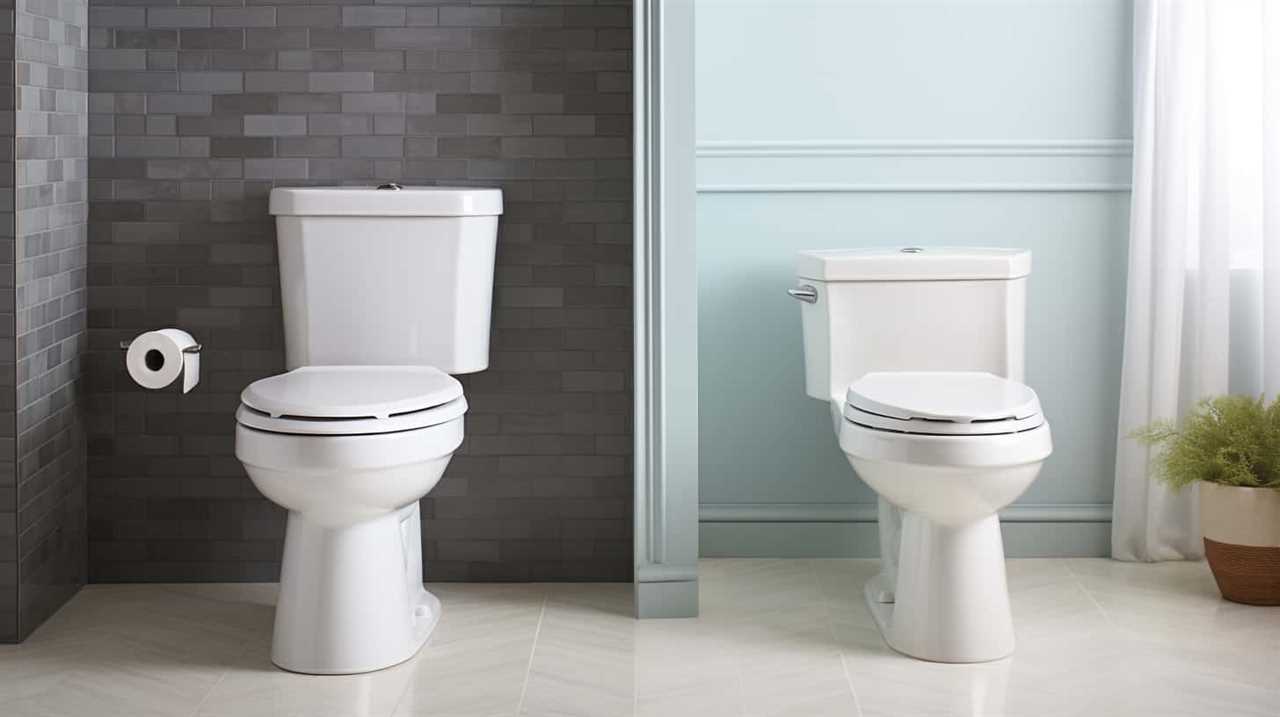
Airplane toilet maintenance is of utmost importance to prevent any malfunctions or unhygienic conditions. Our maintenance team follows strict protocols to regularly inspect and clean the toilets, ensuring they’re in proper working order. This includes checking the flushing mechanism, water supply, and waste disposal system.
Additionally, airplane toilet cleaning procedures are meticulously carried out after each flight. The toilets are thoroughly cleaned and disinfected using appropriate cleaning agents and tools. Surfaces, handles, and buttons are wiped down to remove any potential germs or bacteria.
We understand the importance of maintaining a clean and safe environment for our passengers, and we take these measures seriously to ensure their comfort and well-being.
Restrictions on Flushing Certain Items on a Plane
Our commitment to safety and hygiene on airplanes includes enforcing restrictions on the flushing of certain items. It’s important to follow these restrictions to maintain a clean and sanitary environment onboard.
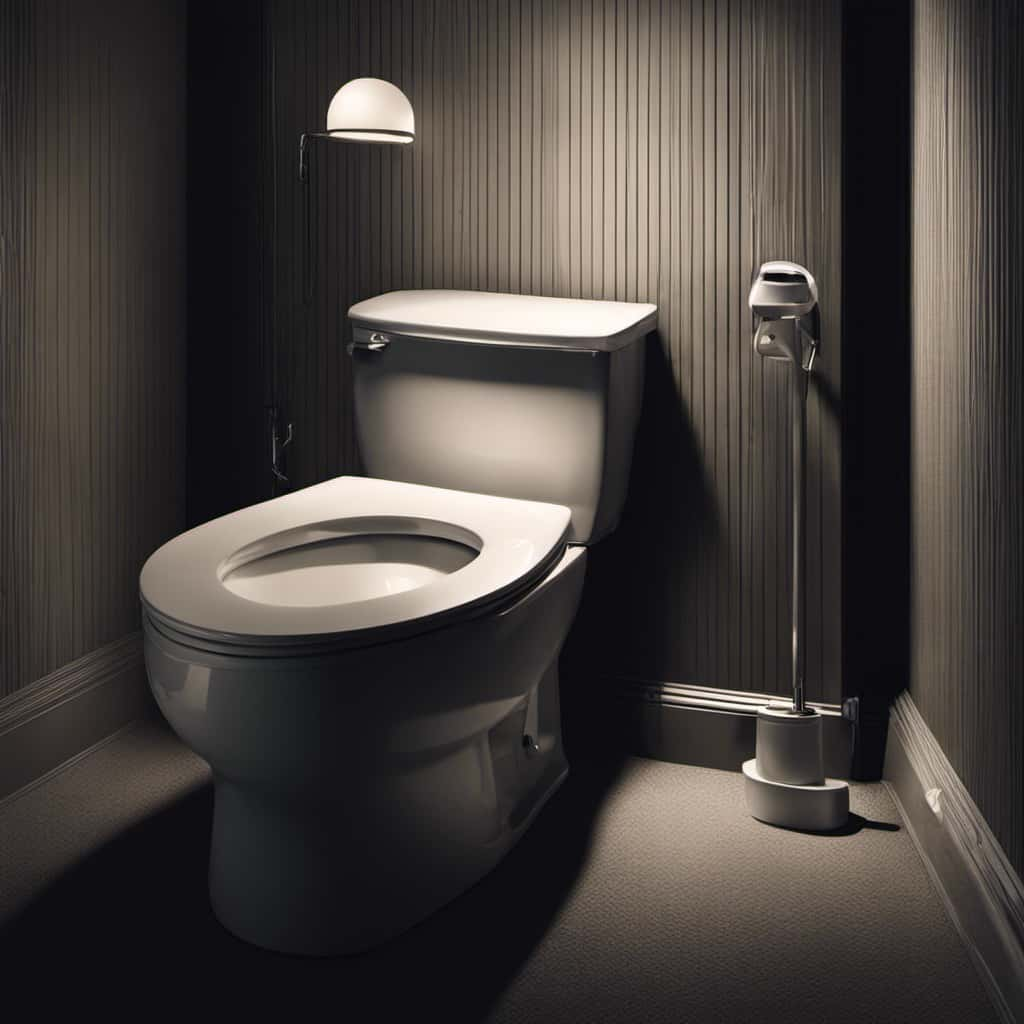
Here are three items that should never be flushed on a plane:
- Medication: Flushing medication down the toilet can contaminate the water supply and harm the environment. It’s best to dispose of medication properly on land, following local guidelines.
- Non-biodegradable items: Items such as plastic wrappers, sanitary products, and paper towels shouldn’t be flushed. These items can clog the plumbing system and cause disruptions during the flight.
- Hazardous materials: Flushing hazardous materials like chemicals, batteries, or sharp objects is strictly prohibited. These items can pose a risk to passengers and crew and can damage the aircraft.
Improper waste disposal can have a significant impact on aircraft cleanliness and functionality. Therefore, it’s crucial to adhere to these restrictions and dispose of waste responsibly.
In the next section, we’ll provide tips for properly using the toilet on an aircraft.
Tips for Properly Using the Toilet on an Aircraft
First, let’s talk about the best way to use the toilet on an aircraft. Airplane toilet etiquette is important to ensure a clean and pleasant experience for everyone on board. When entering the restroom, make sure to lock the door securely. Remember to be mindful of the limited space and avoid spending unnecessary time inside.
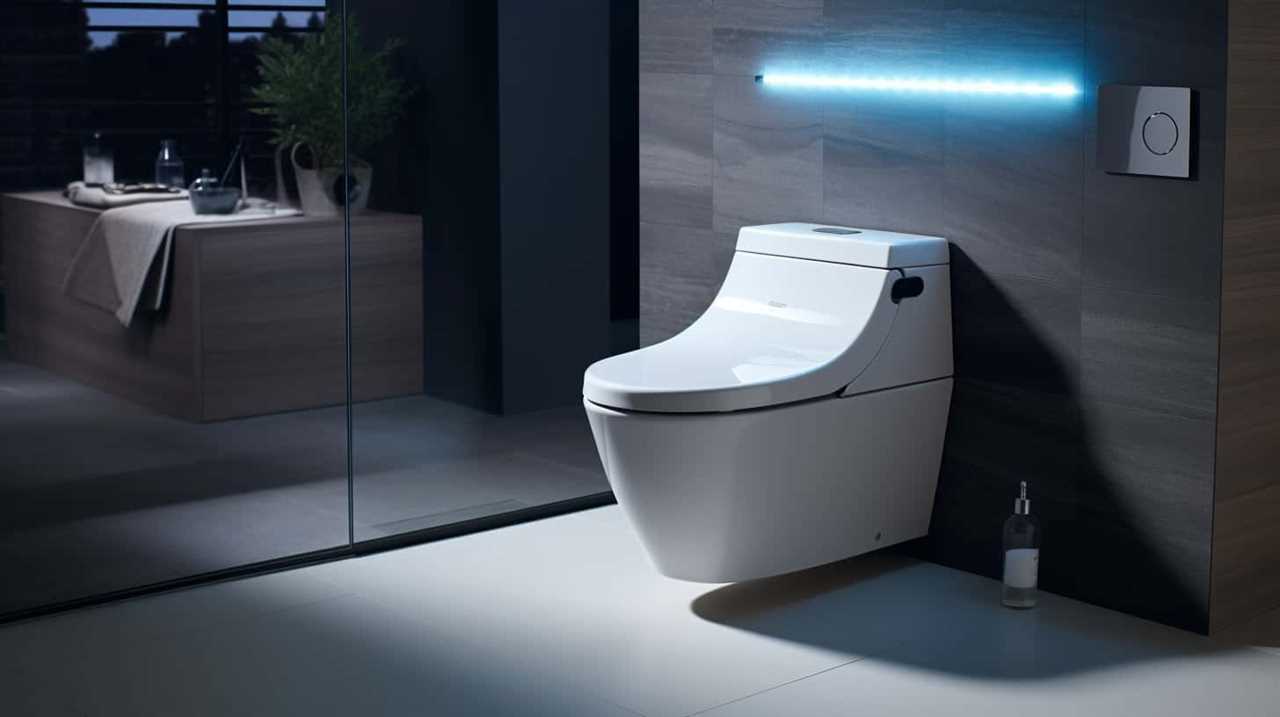
To manage toilet odors on flights, it’s recommended to use the provided air freshener or a small amount of toilet paper in the bowl before using it. After using the toilet, always remember to flush and wash your hands thoroughly using the provided soap and water. Properly disposing of any used paper towels or hygiene products is essential.
Now, let’s delve into the subsequent section about the environmental impact of airplane toilets.
The Environmental Impact of Airplane Toilets
Airplane toilets have a significant environmental impact, contributing to the overall carbon emissions of flights. Here are three key ways in which airplane toilets affect the environment:
- Water usage: The average airplane toilet uses about half a gallon of water per flush, which can quickly add up on long-haul flights. This excessive water usage contributes to the overall environmental footprint of the aviation industry.
- Waste management: Airplane toilets utilize vacuum systems to dispose of waste, which requires energy to operate. Additionally, the waste collected onboard must be properly managed and disposed of upon landing, which can be a complex and resource-intensive process.
- Carbon emissions: The process of disposing of waste from airplane toilets involves incineration or chemical treatment, both of which release carbon emissions into the atmosphere. These emissions contribute to the overall carbon footprint of air travel.
Considering the environmental impact of airplane toilets, it’s crucial to explore more sustainable alternatives for waste management in the aviation industry.

The Future of Airplane Toilet Technology
Exploring advancements in waste management technology is key to improving the environmental impact of airplane toilets. As the aviation industry continues to prioritize sustainability measures, future innovations in airplane toilet technology are being developed to minimize water usage and reduce waste. These advancements aim to make air travel more eco-friendly and efficient.
One such innovation is the vacuum toilet system, which uses suction to remove waste instead of relying on water. This technology not only reduces water consumption but also decreases the weight of the toilet system, resulting in fuel savings for the aircraft. Another promising development is the use of bio-based materials in the construction of airplane toilets. These sustainable materials are biodegradable and have a lower carbon footprint compared to traditional materials.
In addition, researchers are exploring the possibility of incorporating waste treatment systems directly into airplanes. This would enable the recycling of waste materials and further reduce the environmental impact of air travel.
Table: Future Innovations in Airplane Toilet Technology
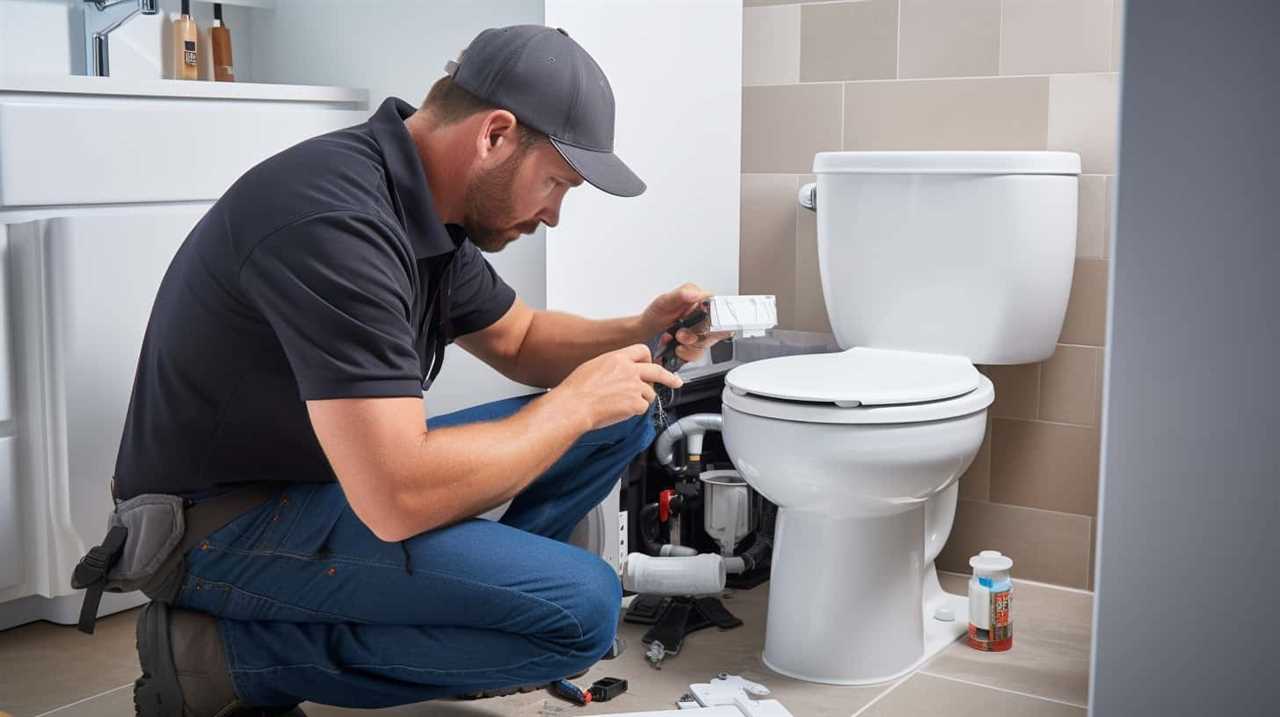
| Innovation | Description |
|---|---|
| Vacuum toilet system | Uses suction to remove waste, reducing water consumption and aircraft weight. |
| Bio-based materials | Sustainable materials with lower carbon footprint compared to traditional materials. |
| Waste treatment systems | Enables recycling of waste materials, further reducing environmental impact of air travel. |
Common Myths and Misconceptions About Airplane Toilets
As we delve into the topic of common myths and misconceptions about airplane toilets, let’s continue our exploration of advancements in waste management technology and their impact on the environmental sustainability of air travel. It’s important to debunk these misconceptions and provide accurate information about airplane toilets and their maintenance procedures. Here are three common myths about airplane toilets:
- Myth: Flushing the toilet on a plane can cause a vacuum and suck people out of the aircraft. This is false. Airplane toilets are designed with a complex vacuum system that prevents any possibility of this happening.
- Myth: Waste from airplane toilets is dumped directly into the sky. In reality, waste is collected in tanks onboard the aircraft and then disposed of properly when the plane lands.
- Myth: Airplane toilets are unhygienic and unsanitary. On the contrary, strict maintenance procedures are followed to ensure cleanliness and hygiene. The toilets are regularly cleaned and disinfected, and waste is disposed of in a controlled manner.
Conclusion: The Convenience and Reliability of Airplane Toilets
To conclude, we can confidently say that the convenience and reliability of airplane toilets are often underestimated.
Aircraft waste management systems are designed to efficiently and effectively handle human waste during flights. These systems use vacuum suction to remove waste from the toilet bowl, ensuring a clean and hygienic experience for passengers.
This method not only saves water but also reduces the weight of the plane, leading to fuel efficiency. Additionally, airlines have implemented water conservation measures on planes, such as using recycled water for flushing and installing low-flow toilets.
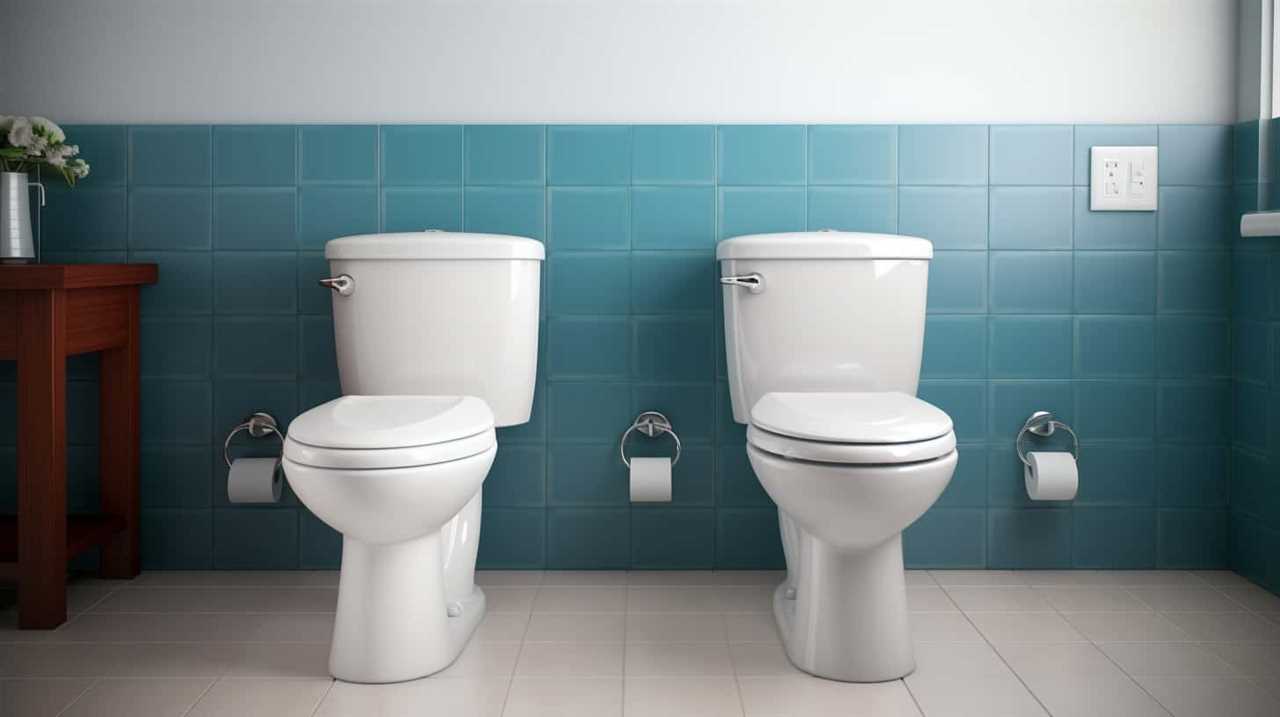
These initiatives help conserve water resources and minimize the environmental impact of air travel.
Conclusion
In conclusion, airplane toilets aren’t only functional but also play a vital role in waste management on aircrafts.
Understanding the technology behind them, we can appreciate the convenience and reliability they offer.
Despite common misconceptions, flushing a toilet on a plane is a simple process that ensures a hygienic and comfortable flying experience for all passengers.

As we look towards the future, advancements in airplane toilet technology will continue to improve the environmental impact and efficiency of these essential onboard facilities.



